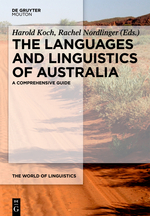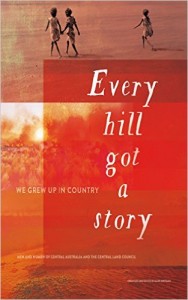
On Thursday I had a most pleasurable time launching a new book on Australian languages and linguistics at the terrific annual conference of the Australian Linguistics Society in Newcastle (thanks Newcastle organisers!). Here goes for ALS’s first ever dry-dock launch… for Harold Koch and Rachel Nordlinger’s co-edited book (2014) The languages and linguistics of Australia: a comprehensive guide.
Australia has a long and interesting history of developing new kinds of books about language areas. In the nineteenth century we had compendia of vocabularies across Australia or parts – by Edward Curr (Curr, 1887), George Taplin (Taplin, 1879) and Robert Brough-Smyth (Smyth, 1876). This was followed in the early twentieth century by Wilhelm Schmidt’s pan-Australia classificatory work (Schmidt, 1919), and later Arthur Capell’s new approach to Australian linguistics (Capell, 1956). Then Norman Tindale produced his map and bibliography in 1974 (Tindale, 1974). In 1976 Dixon edited a collection of papers by lots of different linguists addressing the same grammatical topics (Robert M.W. Dixon, 1976). A flurry of different types of books appeared in the 1980s—from R M W Dixon and Barry Blake’s editing of short grammar handbook series (e.g. Dixon and Blake, 1983), the handbook series for geographic areas with vocabularies and bibliographies which Jim Wafer initiated (e.g. Menning and Nash, 1981). Then there were overview books (Blake, 1987; Dixon, 1980; Yallop, 1982). In 1993 Michael Walsh and Colin Yallop produced their edited collection of chapters on different topics in Indigenous languages (Walsh and Yallop, 1993). That book became the mainstay of courses on Aboriginal languages and was affectionately known as ‘Wallop’.
Read more
 Follow
Follow
